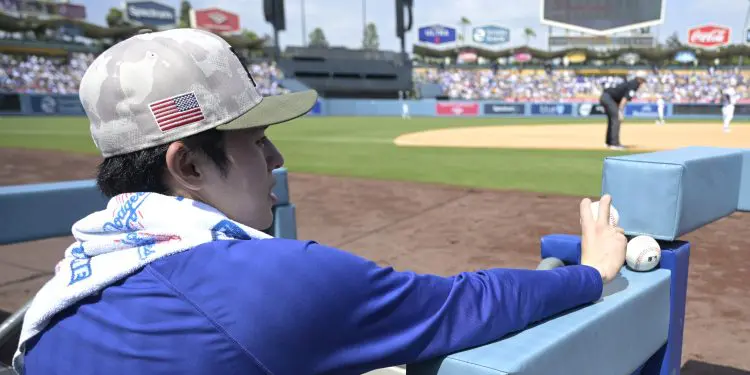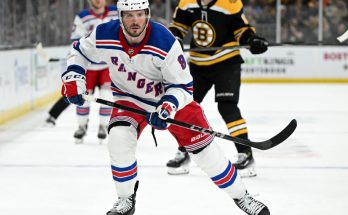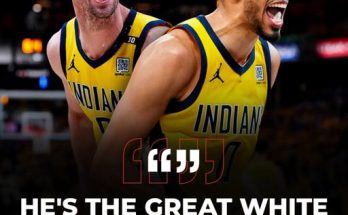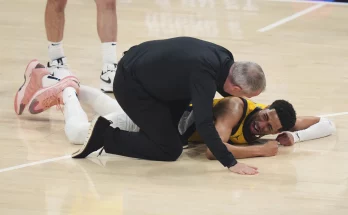Roki Sasaki arrived in the United States with more buzz than any Japanese pitcher since Shohei Ohtani. Armed with a triple-digit fastball, devastating splitter, and poise well beyond his 22 years, the Los Angeles Dodgers believed they had unearthed yet another generational talent to add to their rich pitching heritage. However, what was supposed to be a seamless transition from NPB superstardom to Major League Baseball has hit an early roadblock.
A shoulder impingement has temporarily sidelined the phenom, placing him on the injured list just weeks into his inaugural MLB season. For a franchise that’s grown accustomed to handling high expectations and pitching injuries, Sasaki’s situation brings both disappointment and cautious optimism. And for Sasaki himself, it’s a test of resilience in a league that demands it.
A Promising Start, a Painful Pause
Sasaki dazzled fans and scouts alike during spring training. His fastball sat comfortably at 99 mph, and he demonstrated the pinpoint command that made him a legend with the Chiba Lotte Marines. The Dodgers’ long-term vision was evident—Sasaki was being slowly worked into the rotation with an eye on building his innings and adapting to MLB hitters.
In his first few appearances, Sasaki showed flashes of brilliance. While his stat line (a 3.86 ERA over 16.1 innings with 21 strikeouts and 5 walks) was solid, it was his demeanor and the ease of his mechanics that most impressed the Dodgers coaching staff. He looked like he belonged. But then came the first sign of trouble.
After his April 25 start against the San Diego Padres—where his velocity noticeably dipped in the fifth inning—Sasaki reported mild discomfort in his throwing shoulder. The Dodgers, ever-cautious with young arms, pulled him from his next scheduled start. Subsequent evaluations revealed a shoulder impingement, a relatively common but nagging injury that requires rest and rehab more than aggressive treatment.
Understanding Shoulder Impingement
A shoulder impingement occurs when the rotator cuff tendons are intermittently trapped and compressed during shoulder movements. For pitchers, whose arms undergo violent, high-speed rotational motion, it’s a particularly delicate issue.
While not as ominous as a torn UCL or labrum, impingements can linger if not addressed properly. For Sasaki, the Dodgers’ training staff immediately implemented a shutdown protocol. Rather than risk further inflammation or compensation injuries, Sasaki was placed on the 15-day IL with a return targeted for early to mid-June.
According to Dodgers manager Dave Roberts, “We’re being proactive. Roki’s a competitor and wants to be out there, but this is about the long game. We want him healthy—not just for June, but for October.”
A Young Star’s Determination
Sasaki, speaking through an interpreter during a press availability, expressed both frustration and determination.
“It’s difficult not being able to help the team,” Sasaki said. “But I understand the importance of listening to my body. I’m working closely with the trainers and will return stronger than before.”
This attitude mirrors the maturity Sasaki displayed throughout his meteoric rise in Japan. Nicknamed “The Monster of Reiwa” after throwing a record-breaking 105-mph pitch in high school and later a perfect game with 19 strikeouts in the NPB, Sasaki has never lacked mental toughness. What makes this setback different is the backdrop: a foreign country, a new league, and massive expectations.
Still, the Dodgers remain confident that this hiccup won’t derail Sasaki’s trajectory.
Dodgers’ Depth and Planning
Fortunately for Los Angeles, pitching depth has long been one of the organization’s hallmarks. Even with Sasaki on the shelf, the rotation remains formidable with Tyler Glasnow, Yoshinobu Yamamoto, Bobby Miller (when healthy), and veteran Clayton Kershaw expected back midseason.
Michael Grove and Gavin Stone have filled in admirably, allowing the Dodgers to avoid rushing Sasaki back into the fray. The organization has also emphasized rotational load management, a strategy that’s paid dividends in previous seasons.
Sasaki’s injury, while disappointing, could serve as a blessing in disguise. With innings management a priority in his rookie campaign, this early-season absence could allow the Dodgers to deploy Sasaki strategically down the stretch—and potentially in October, where his electric stuff could be a difference-maker.
Sasaki’s Pre-MLB Journey
To appreciate Sasaki’s path, one must revisit his remarkable story. Born in Iwate Prefecture, he was just a child when the 2011 Tōhoku earthquake and tsunami claimed the life of his father and grandparents. Raised by a single mother, Sasaki grew up quickly, carrying both grief and ambition.
His legend began in high school, where he routinely hit 100 mph on radar guns and set national records. Opting to skip his senior year national tournament to preserve his arm—an unheard-of decision in Japan—he prioritized longevity over glory.
He signed with the Chiba Lotte Marines in 2019 and was brought along slowly. By 2022, he threw the 16th perfect game in NPB history, followed by 8 more perfect innings in his next start. Scouts were in awe of his fluid mechanics and fierce competitiveness.
It was no surprise when MLB teams lined up for his services once he was posted. The Dodgers, always aggressive in international scouting, saw in Sasaki a future ace. Their $85 million contract (with incentives) was a statement of belief in his long-term value.
Sasaki’s Role Moving Forward
When Sasaki returns in June—barring setbacks—the Dodgers plan to use him cautiously but meaningfully. His innings will be monitored closely, and matchups may dictate his starts, especially against playoff-caliber opponents.
The team envisions a scenario where Sasaki becomes a crucial weapon during the final months of the season, when rotations shrink and every out matters more. His fastball/splitter combo could make him a lethal weapon in high-leverage situations—even potentially out of the bullpen if the team deems that the best usage.
But make no mistake: the Dodgers are grooming Sasaki as a future ace. This injury, while inconvenient, doesn’t change the long-term plan. Rather, it’s a necessary reminder of the rigors of a 162-game season and the importance of incremental adaptation.
MLB Community Reacts
Across the baseball world, there’s been a notable outpouring of support for Sasaki. Several Japanese stars, including Shohei Ohtani, Yu Darvish, and Masahiro Tanaka, have reached out to offer encouragement.
Darvish, who dealt with early-career injuries himself, spoke candidly: “It’s a marathon, not a sprint. Roki is young and incredibly talented. The best is yet to come.”
Ohtani, now Sasaki’s teammate, has become a mentor figure. The two share a bond both culturally and professionally. Ohtani reportedly visited Sasaki multiple times during his rehab sessions and has emphasized the mental side of recovery—especially when far from home.
“I told him this is part of the journey,” Ohtani told Japanese media. “You learn a lot about yourself when you’re not on the field.”
A Broader Impact on Japanese Baseball
Sasaki’s transition to MLB, though interrupted, has already opened new pathways for young Japanese talent. His willingness to cross over at just 22—before exhausting full NPB service time—has shifted the conversation around early posting systems.
More players may follow his lead, which could transform the traditional pipeline. Sasaki’s global fame also continues to elevate the profile of Japanese baseball and strengthen MLB’s foothold in Asia.
Even in recovery, Sasaki remains a cultural ambassador. His grace under pressure and commitment to excellence reflect the values of both leagues.
What to Expect in June
If Sasaki’s rehab continues as planned, he could begin throwing bullpens by mid-May. From there, a brief rehab assignment in Triple-A Oklahoma City is expected, possibly culminating in a return during the Dodgers’ mid-June homestand.
The organization will be watching his velocity, spin rates, and recovery days closely. Once he checks those boxes, the green light will be given.
Fans should temper their expectations—at least initially. Sasaki might need a few starts to recalibrate, especially against MLB hitters. But if his history is any indication, it won’t take long for “The Monster of Reiwa” to roar once more.



